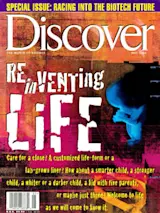Mommy, where do babies come from? Parents have dreaded this question ever since the stork made its first delivery. But today’s mommies and daddies have more explaining to do than their own parents could possibly have imagined. Though the birds and bees discussion was never easy, its elements were fairly straightforward: the fireworks exploding, the train chugging through the tunnel, the waves pounding the shore, the occasional reference to anatomy. Once upon a time, baby-making was synonymous with whoopee-making, and frozen eggs were for pastry dough, and seven was how many times you should let the phone ring before you hang up, not how many fetuses you could fit in a womb.
These days, though, the facts of life can sound a lot like science fiction, as late-twentieth-century humanity grapples with the rise of noncoital conception. There are now more than a dozen ways to make a baby, the vast ...














